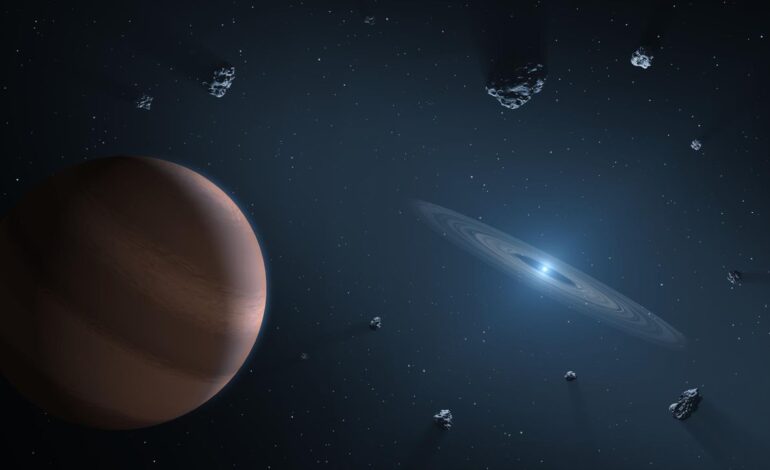Einstein’s Theory Extends Possibility of Life Around White Dwarfs

Recent research suggests that planets orbiting white dwarf stars may have a greater potential for hosting life than previously believed. By applying principles of general relativity, scientists have identified a wider habitable zone around these stars, which could allow for long-term sustainability of alien life.
White dwarfs are the remnants of sun-like stars that have exhausted their nuclear fuel. The Milky Way contains hundreds of millions of these stars, which can remain warm for hundreds of billions of years, making them intriguing targets in the search for extraterrestrial life. However, earlier studies indicated severe challenges for planets within their habitable zones. This zone is significantly narrower than that around more typical stars, extending only from one-tenth to one-hundredth the distance between Earth and the Sun.
The primary concern arises from the gravitational influence of nearby planets. If a companion planet is present in the system, its gravitational pull can cause a planet to adopt a highly elliptical orbit. Such an orbit leads to tidal heating, a process that can raise a planet’s temperature to uninhabitable levels. Previous research concluded that even minor deviations from a circular orbit could render a planet uninhabitable, primarily relying on Newtonian gravity for its calculations.
Newtonian gravity, while effective for many scenarios, does not account for the complexities present in systems with dense stars, such as white dwarfs. For instance, the orbit of Mercury around the Sun precesses in a manner that Newtonian physics cannot fully explain. This is where Einstein’s theory of general relativity becomes crucial. It describes gravity as a curvature of spacetime, providing a more accurate framework for understanding planetary orbits.
In a paper published on September 30, 2023, to the preprint database arXiv, researchers conducted a detailed analysis of planets orbiting white dwarfs, incorporating the effects of general relativity. The findings revealed that the precession of a planet’s orbit can help maintain its stability, reducing the risk of tidal heating that could otherwise make these planets uninhabitable.
This new perspective indicates that a variety of orbital configurations can remain stable, potentially allowing planets to sustain life. Although extreme cases—where a companion planet is too large or too close—still pose risks of tidal heating, many combinations could support habitable conditions.
If civilizations were to arise on these planets, they might eventually discover the principles of general relativity independently. In such a scenario, these beings would owe their existence to the very physics that allows them to thrive in an environment once thought to be inhospitable.
The implications of this research extend beyond astrobiology, offering fresh insights into our understanding of planetary dynamics in extreme conditions. As scientists continue to explore the cosmos, the potential for life around white dwarfs may encourage a re-evaluation of what constitutes a habitable world.






